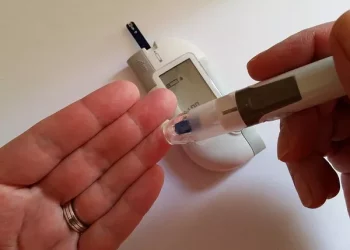In the intricate tapestry of human health, diabetes has unfurled into a menacing global epidemic, casting a wide – reaching shadow that encompasses millions across the globe. Its prevalence has been on a staggering rise in recent decades, cutting across different age groups, ethnicities, and socioeconomic strata. The World Health Organization has reported a significant upsurge in the number of diabetes cases, with projections indicating that this trend is likely to continue unabated.
Understanding Blood Sugar Basics
The Role of Glucose in the Body
Glucose, a simple sugar, is the primary source of energy for our body’s cells. It enters the bloodstream after we consume carbohydrates in our diet, be it from grains, fruits, or vegetables. Once in the blood, glucose needs to be transported into the cells to be used for energy production. This process is regulated by a hormone called insulin, which is produced by the pancreas. Insulin acts like a key, unlocking the cells to allow glucose entry. When everything functions properly, blood sugar levels remain within a healthy range, ensuring the body has a steady supply of energy while preventing the harmful effects of too much or too little glucose in the blood.
Normal Blood Sugar Ranges
In a healthy individual, blood sugar levels fluctuate throughout the day in response to eating, physical activity, and other factors. Fasting Blood Sugar: When a person has not eaten for at least 8 hours (usually overnight), the normal fasting blood sugar level typically ranges from 70 to 99 mg/dL (3.9 to 5.5 mmol/L). This baseline level indicates how well the body is maintaining blood sugar stability during periods of no food intake. Post – Prandial (After – Meal) Blood Sugar: After a meal, especially one rich in carbohydrates, blood sugar levels rise. In healthy individuals, two hours after a meal, the blood sugar level should be less than 140 mg/dL (7.8 mmol/L). This post – meal spike is normal, but the body’s regulatory mechanisms quickly bring the levels back down to normal range.
Defining Prediabetes
Fasting Blood Sugar and Prediabetes
Prediabetes is a condition where blood sugar levels are higher than normal but not yet high enough to be diagnosed as type 2 diabetes. When it comes to fasting blood sugar, a level between 100 and 125 mg/dL (5.6 to 6.9 mmol/L) is considered prediabetes. At this stage, the body’s ability to regulate blood sugar, particularly through the action of insulin, is starting to become impaired. The pancreas may still be producing insulin, but the cells in the body are becoming less sensitive to its effects, a phenomenon known as insulin resistance. This leads to a situation where the fasting blood sugar level creeps up, signaling the beginning of a potentially serious health issue.
Oral Glucose Tolerance Test (OGTT) and Prediabetes
The Oral Glucose Tolerance Test is another important diagnostic tool for detecting prediabetes. In this test, a person is asked to fast overnight. Then, they drink a sugary solution, and their blood sugar levels are measured at specific intervals, usually 1 and 2 hours after consuming the solution. A 2 – hour blood sugar level between 140 and 199 mg/dL (7.8 to 11.0 mmol/L) after the oral glucose load indicates prediabetes. This test is particularly useful in identifying individuals who may not show elevated fasting blood sugar levels but have an impaired ability to handle a glucose load, which is a characteristic of prediabetes.
Hemoglobin A1c and Prediabetes
Hemoglobin A1c, often abbreviated as HbA1c, is a measure of average blood sugar levels over the past 2 to 3 months. It represents the percentage of hemoglobin (a protein in red blood cells) that has glucose attached to it. A normal HbA1c level is less than 5.7%. However, a level between 5.7% and 6.4% is considered prediabetes. The HbA1c test is convenient as it does not require fasting and provides a long – term view of blood sugar control. It is especially valuable in detecting prediabetes in individuals who may have intermittent or variable blood sugar elevations that might be missed by single – point – in – time tests like fasting blood sugar or the OGTT.
Why Recognizing Prediabetes Matters
Risk of Progression to Diabetes
If left unaddressed, a significant proportion of individuals with prediabetes will progress to type 2 diabetes within a few years. In fact, studies have shown that without lifestyle changes or appropriate medical intervention, about 15 – 30% of people with prediabetes will develop type 2 diabetes within 5 years. By identifying prediabetes early based on abnormal blood sugar levels, steps can be taken to slow down or even reverse this progression.
Associated Health Risks
Prediabetes is not just a precursor to diabetes; it is also associated with other health problems. People with prediabetes are at an increased risk of developing cardiovascular diseases, such as heart attacks and strokes. The elevated blood sugar levels can damage blood vessels and nerves over time, contriibuting to the development of these serious conditions. Additionally, prediabetes can also lead to other metabolic disorders, further compromising overall health.
Lifestyle Interventions for Prediabetes
Diet Modifications
One of the cornerstones of managing prediabetes is dietary change. Reducing the intake of refined carbohydrates and added sugars is crucial. Instead, focusing on a diet rich in fiber – containing foods like whole grains, fruits, vegetables, and legumes can help regulate blood sugar levels. Fiber slows down the digestion and absorption of carbohydrates, preventing rapid spikes in blood sugar. Also, controlling portion sizes is important to avoid overeating, which can lead to elevated blood sugar.
Physical Activity
Regular physical activity is equally important. Engaging in at least 150 minutes of moderate – intensity aerobic exercise, such as brisk walking, cycling, or swimming, per week can improve insulin sensitivity. Exercise helps the cells in the body to better respond to insulin, allowing for more efficient uptake of glucose from the bloodstream. Additionally, strength – training exercises, like weightlifting, can also contribute to improving metabolism and blood sugar control.
Conclusion
understanding the blood sugar levels that define prediabetes is the first step in a proactive approach to health. By being aware of these thresholds and taking appropriate action, individuals can potentially avoid the development of full – blown diabetes and its associated complications. Regular screening, especially for those at high risk, such as individuals with a family history of diabetes, being overweight or obese, or having a sedentary lifestyle, is essential for early detection and intervention.
























